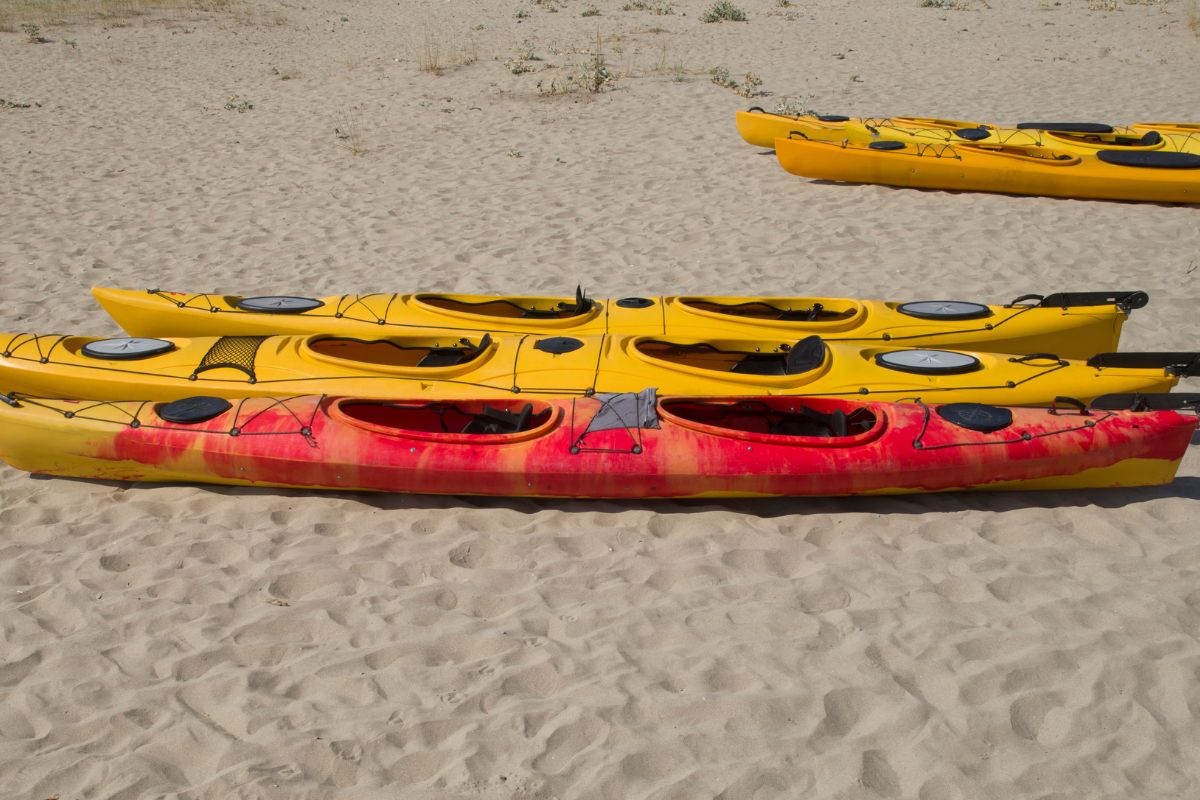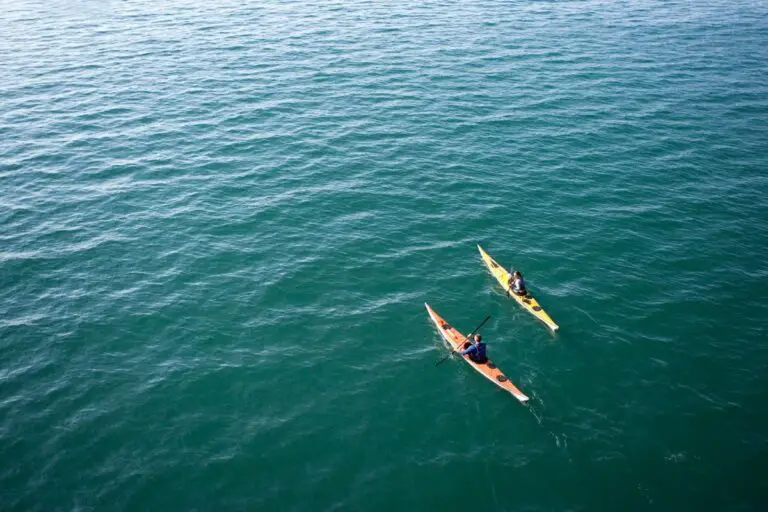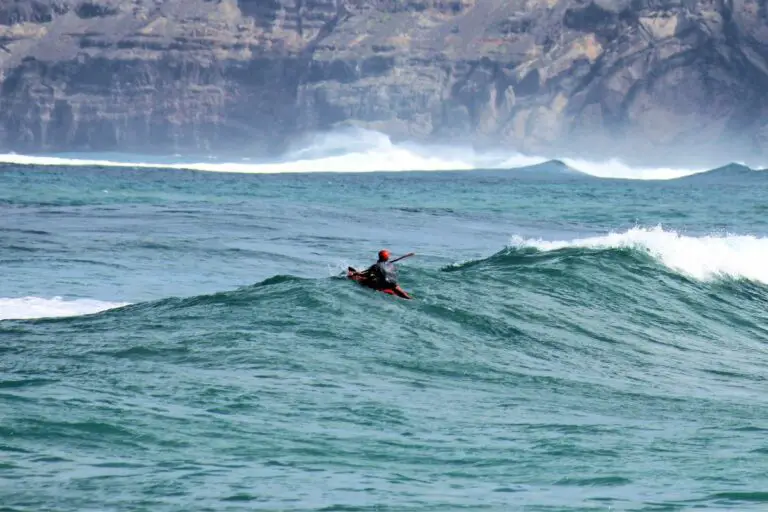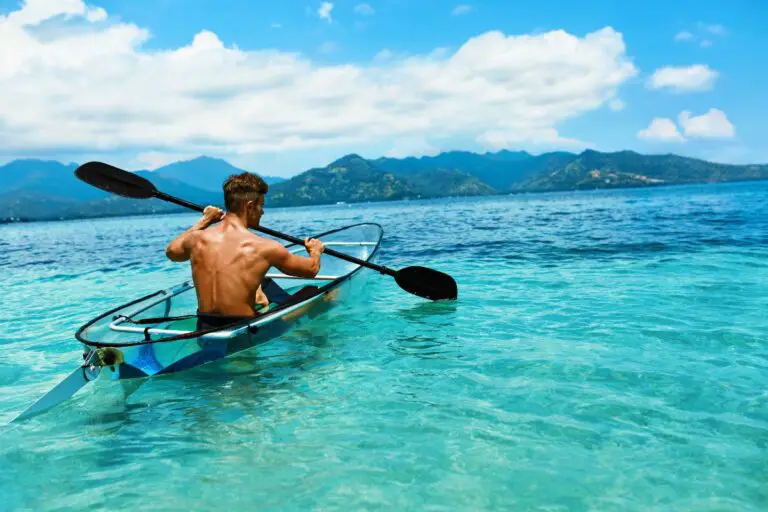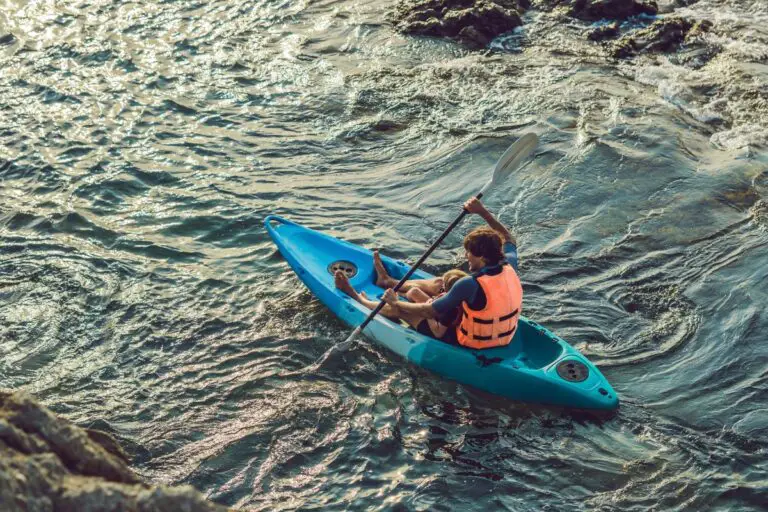Can One Person Use A Two-Person Kayak? Only if You Do This
There are two types of kayaks when it comes to the number of paddlers: solo and tandem.
Solo kayaks are designed for one person, while tandem kayaks are designed for two. But can one person use a two-person kayak?
One person can use a two-person kayak, but it may require some adjustments to ensure proper balance. To set up a two-person kayak for one person, you need to position the seat towards the middle of the kayak, distribute weight evenly, and install a rudder or a skeg to help with maneuverability.
Keep reading to learn more about the benefits and challenges of using a two-person kayak alone and how to set up a two-person kayak for one person.
Table of Contents
Can One Person Use A Two-Person Kayak?
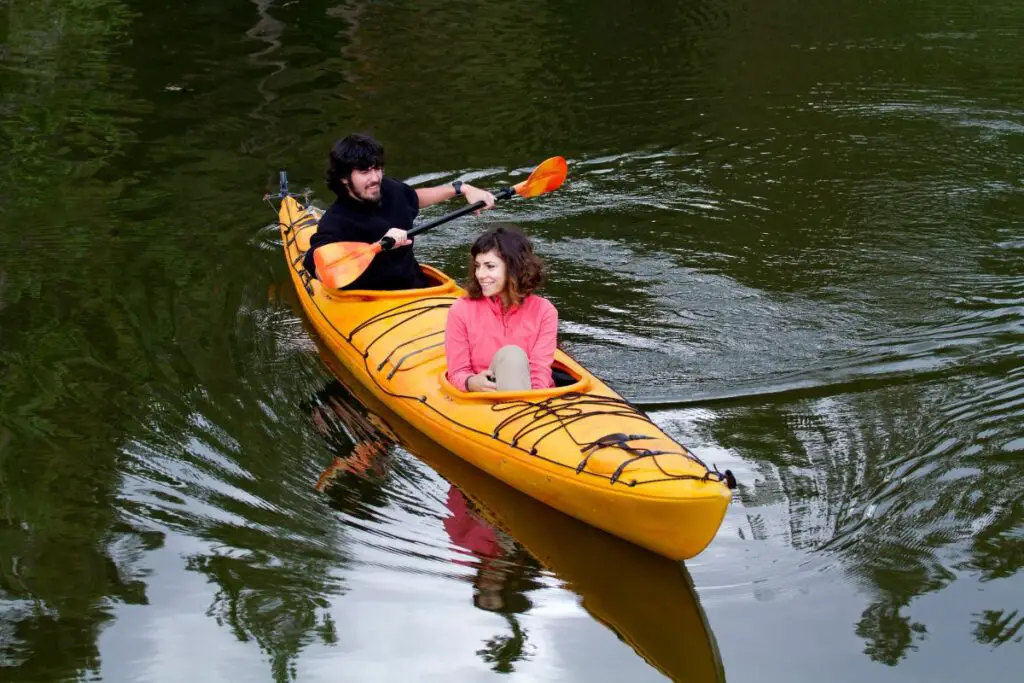
Kayaks have different designs to suit the different needs of kayakers. For example, one-person kayaks are smaller and more maneuverable, while two-person kayaks are larger and offer more stable storage space.
However, in some cases, one person may have to use a two-person kayak because it’s the only kayak available or because of the benefits these kayaks offer.
While it is possible for one person to use a two-person kayak, there may be some challenges that will hinder the kayak’s performance, so adjustments have to be made to ensure proper balance and stability.
The Benefits of Using A Two-Person Kayak Alone
Using a two-person kayak alone may seem like an unconventional choice, but doing so has several benefits.
So, here are a few reasons why you might consider using a tandem kayak solo:
- Increased stability: Two-person kayaks are generally more stable than one-person kayaks, thanks to their wider beam and larger size. This can be particularly helpful for beginners or those who are less confident in the water.
- More legroom: Two-person kayaks typically have more space for paddlers than one-person kayaks, providing more legroom for taller or larger individuals or those who prefer a more comfortable paddling position.
- More storage space: Two-person kayaks often have more than one-person kayaks, making them ideal for bringing additional gear or a pet.
The Challenges of Using A Two-Person Kayak Alone
While using a two-person kayak alone has its benefits, there are also some challenges to consider.
So, here are a few potential drawbacks of using a tandem kayak solo:
- Weight distribution: Two-person kayaks are designed for two paddlers, and the weight distribution is typically optimized for this configuration. When paddling solo in a tandem kayak, you may need to adjust the positioning of your body and gear to maintain proper balance and stability. Learn more about weight distribution in kayaks here.
- Maneuverability: Two-person kayaks are generally less maneuverable than one-person kayaks due to their larger size and wider beam. This can make navigating in tight spaces or around obstacles more challenging.
- Speed: Two-person kayaks can be more challenging to maintain speed when paddled solo, as they are designed to be propelled by two people. This can be especially true if the kayak is heavily loaded with gear.
- Transport and storage: Two-person kayaks can be more challenging to transport and store than one-person kayaks due to their larger size and weight.
- Cost: Two-person kayaks are typically more expensive than one-person kayaks. If you only plan to paddle solo most of the time, investing in a one-person kayak may be a more practical choice.
It’s important to be aware of these challenges and to take steps to address them if you decide to use a two-person kayak alone.
How to Set Up A Two-Person Kayak for One Person?
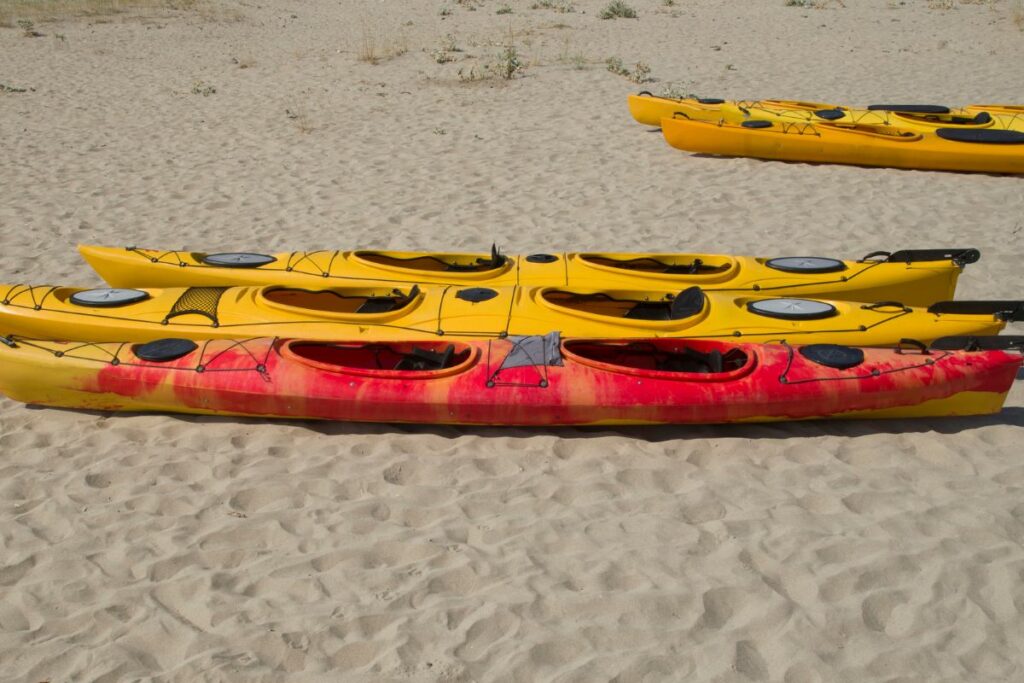
Setting up a two-person kayak for one person can be done in a few simple steps:
- Adjust the seating position: Move the seat towards the center of the kayak to achieve proper balance and reduce the risk of tipping. If possible, remove the second seat to create more space. Adjust the angle of the seatback for better comfort.
- Adjust the footrests: Move the adjustable footrests to the appropriate position for your leg length and comfort. This will help you maintain proper posture and prevent strain or fatigue.
- Distribute weight evenly: Proper weight distribution is important for stability and balance. Position your gear and any ballast to keep the weight evenly distributed across the kayak. You can also use a dry bag or other buoyant objects to balance the kayak’s weight.
- Install a rudder or skeg: Adding a rudder or skeg can help you steer the kayak more easily, especially in windy or choppy conditions. It can also help you maintain a straight course and reduce the need to make frequent adjustments.
- Use a paddle float: A paddle float is an inflatable device that can be attached to your paddle to help you stabilize your kayak when entering or exiting the kayak alone. This is especially important when the water is choppy, and you may be at risk of capsizing. You can also consider paddle leashes.
I recommend getting the Riverstones paddle float. For the price, it’s easily the highest quality you can find and it does its job very well.

What If You Have A Sit-Inside Kayak?
If you have a sit-inside kayak, you won’t be able to adjust the position of the seat, so it’s recommended to sit in the rear cockpit seat of the kayak, as it is typically closer to the center of the boat and provides better balance.
You can also use the front cockpit to store gear and supplies to help balance the kayak.
However, it is important to note that this setup may not be as stable as a kayak with the seats adjusted, so you should take extra precautions to ensure a safe experience.
Other Tips for Using A Tandem Kayak Alone
In addition to setting up the kayak properly, there are several other tips to consider when using a tandem kayak alone:
- Use a smaller tandem kayak: A smaller tandem kayak will be easier to maneuver and more stable when paddled solo than a larger one.
- Use a kayak cart: Transporting a larger kayak can be challenging, so using a kayak cart can make the process easier and less strenuous.
- Practice proper paddling technique: To maintain stability and maneuverability when paddling solo, focus on proper paddling technique, including using your core muscles and maintaining an upright posture.
- Use caution in windy conditions: Wind can make it more challenging to control a larger kayak, so it’s important to take caution and avoid paddling in windy conditions when possible.
By following these tips and using common sense, you can safely and comfortably use a tandem kayak alone and enjoy its benefits.
Kayak your way to Freedom
- On a budget? Check out the best fishing kayaks under $500 here and the best Fishing Kayaks under $1,000 here. Or Check the best Cheap Kayaks here.
- Going fishing? Here are the best Ocean fishing kayaks, and here are the best River Fishing Kayaks.
- You can also find the best Fly Fishing Kayaks here and the best Bass Fishing Boats here.
- A bit experienced? Check out the best modular kayaks here and the best tandem fishing kayaks here.
- Looking for something special? Check out my favorite Ducky kayaks here.
- Navigate your way with these awesome and beginner-friendly Kayak compasses.
- Going Hunting? These Duck hunting kayaks will give you an unfair advantage!
- Have a need for speed? These motorized kayaks will get you moving.
- Protect yourself from the sun with these Kayak shades, and make your kayak more comfortable with these Kayak seats.
- Keep your feet dry and warm with these superb Kayaking shoes.
- Going Kayaking in cold water? Stay warm with these Kayaking gloves.
- Paddle Less, Fish More with the Best Kayak Motors
- Looking to get a trolling motor on your kayak? Check out the best kayak trolling motor mounts here.
If you like this article, please share it or pin it, you can find the share buttons below. We will really appreciate it ❤️

